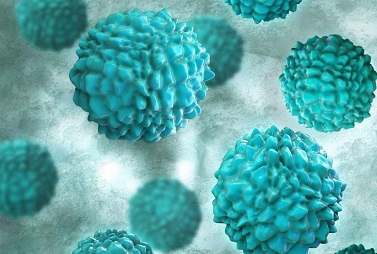U.S. Medical News: CDC Warns That Northeastern States In America Hit By Norovirus Outbreaks!
Nikhil Prasad Fact checked by:Thailand Medical News Team Feb 23, 2024 1 year, 2 months, 3 days, 9 hours, 13 minutes ago
U.S. Medical News: In recent weeks, the U.S. Centers for Disease Control and Prevention (CDC) has issued a stern warning about a significant surge in norovirus cases, particularly in the Northeastern region of the United States. This stomach virus, commonly known as norovirus, has been spreading rapidly, with a three-week average of positive tests reaching 13.9 percent, maintaining a disturbingly high positive rate of 10 percent since mid-December 2023. While the Northeast bears the brunt of this outbreak, other regions, including the South, Midwest, and West, are also grappling with an increase in positive cases, albeit at slightly lower rates.
https://www.cdc.gov/surveillance/nrevss/norovirus/region.html#north
 U.S. Medical News: CDC Warns That Northeastern States In America
U.S. Medical News: CDC Warns That Northeastern States In America
Hit By Norovirus Outbreaks
Understanding Norovirus
Norovirus, the leading cause of vomiting, diarrhea, and foodborne illness in the United States, poses a significant health threat. The virus, notorious for its ease of transmission, affects individuals of all ages, spreading rapidly and causing inflammation of the stomach lining and intestines. The U.S.CDC emphasizes that people can be infected with different types or strains of norovirus multiple times throughout their lives, and having immunity to one type does not guarantee protection against others. While specific immunity can develop, the duration of this protection remains uncertain.
Symptoms and Seasonality
The symptoms of norovirus infection include not only vomiting and diarrhea but also fever, headache, dehydration, and body aches. Outbreaks tend to occur more frequently during late fall, winter, and early spring, a pattern that aligns with the current surge. The virus's prevalence during these months underscores the importance of public awareness and preventive measures.
Preventive Measures
The U.S. CDC strongly recommends several preventive measures to curb the spread of norovirus. Proper handwashing with soap and water, thorough cleaning and disinfection of surfaces with bleach, and washing laundry in hot water are crucial steps to reduce the risk of infection. These measures become even more critical during an outbreak, and adherence to hygiene practices can make a significant difference.
Statistics and Impact
The severity of norovirus outbreaks is evident in the statistics provided by the CDC. Annually, between November and April, there are 19 to 21 million reported cases in the United States. Hospitalizations reach around 109,000, with 900 resulting in death, particularly among older adults. These alarming figures underscore the need for heightened vigilance and swift action to contain the current surge.
Expert Insights and Recommendations:
Healthcare professionals, such as Dr Cirigliano and Lead Nurse Practitioner Dodi Iannaco, emphasize the importance of taking precautions, especially for vulnerable populations like children and seniors. The recommendation to stay
hydrated by consuming fluids like water, Gatorade, or Pedialyte is crucial for managing symptoms at home. However, if symptoms persist, particularly the inability to keep fluids down, seeking medical attention, possibly in the emergency room, is advised.
Regional Impact and CDC's Report
The impact of the norovirus outbreak is not confined to the Northeast alone. The U.S. CDC's report highlights positive cases in the South (9.5%), Midwest (10%), and West (12%). The collective reach of this outbreak across regions emphasizes the urgency of implementing widespread preventive measures and public health campaigns to curb its spread.
Local
U.S. Medical News reports also show that various hospitals across most states not just the Northeast are also witnessing more cases of Norovirus infections.
In-Depth Look at Norovirus
Norovirus, also known as the Norwalk virus, is the most common cause of gastroenteritis globally. The virus, belonging to the Caliciviridae family, is non-enveloped and primarily transmitted through the fecal-oral route. Airborne transmission can occur, especially during vomiting episodes, making it highly contagious. The lack of a specific treatment or vaccine necessitates a focus on preventive strategies, including proper handwashing and surface disinfection.
Pathophysiology and Complications
When an individual contracts norovirus, the virus replicates in the small intestine, leading to acute gastroenteritis. Symptoms, including nausea, vomiting, diarrhea, abdominal pain, and general lethargy, typically manifest within 12 to 48 hours. While severe illness is rare, complications such as dehydration can pose risks, particularly in vulnerable populations.
Diagnosis and Prevention
Diagnosing norovirus involves PCR assays or quantitative PCR assays, providing rapid results. However, preventive measures, including hand hygiene and disinfection, remain paramount. Immunity to a specific strain lasts between six months to two years post-infection, offering partial protection against reinfection.
Conclusion
The ongoing norovirus outbreak in the United States, especially in the Northeast, demands immediate attention and widespread adoption of preventive measures. The CDC's warning underscores the urgency of practicing proper hand hygiene, surface disinfection, and staying informed about the virus's transmission dynamics. As healthcare professionals and experts emphasize, proactive measures and timely medical attention for severe cases are crucial in mitigating the impact of this highly contagious virus on public health.
For the latest
U.S. Medical News, keep on logging to Thailand Medical News.
